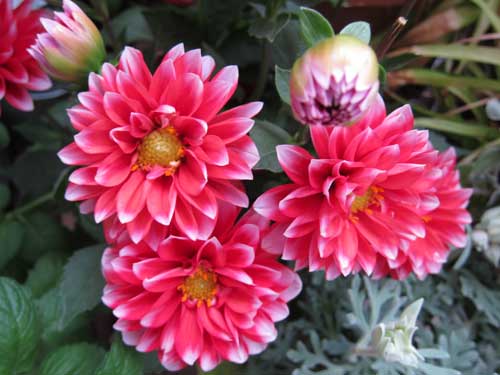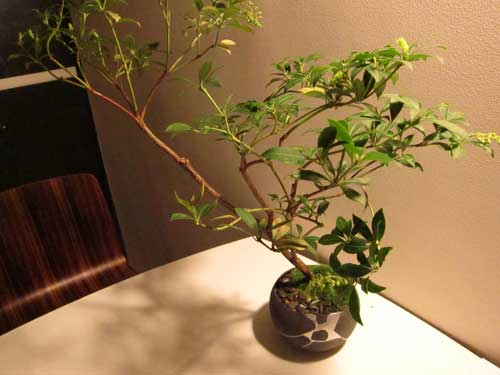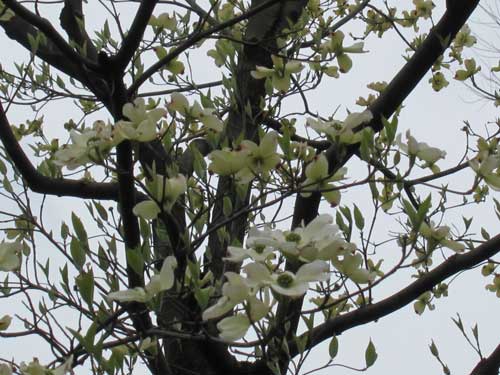
Azaleas bring back memories of the East Coast in the US, particularly the mid-Atlantic region where I grew up.

Azaleas bring back memories of the East Coast in the US, particularly the mid-Atlantic region where I grew up.

ホスタはアジアの植物だけど、アメリカではもっと人気。アメリカ人にとって、ホスタは上品な輸入品の高価な気分があります。東京の中では、あまりそう見えないですが。育てやすいし、素敵だと思います。
Although hosta is an Asian plant, it’s more popular in America. For Americans, hostal is a very elegant import and expensive feeling. I associate it with upper class neighborhoods in New York City and elsewhere in the Northeast and Mid-Atlantic. You hardly see it in Tokyo. It’s easy to grow and very attractive I think.

植物や花も記憶を呼び起こします。ダリアはサンフランシスコ市の花です。
Plants and especially flowers trigger memories. Recently lilacs were blooming in Tokyo, and it reminded me of childhood and my grandmother who was a garden hobbyist in Maryland. I tweeted about it, and heard from a friend about the memories she has of a lilac bush by a childhood bedroom. Seeing hostas in my in-laws’ garden reminds me of the suburban neighborhood of my childhood. Japanese maples, azaleas, rhododendrons, and anemone evoke a Tea Trade era of Anglophilic commerce and class in the United States’ Northeast and mid-Atlantic.
Dahlias remind me of San Francisco, where it is the city flower. I love the huge variety and outrageous colors. And its interesting history of being first discovered in Mexico and then bred in the Netherlands. This red and white specimen was exquisite when I bought it and for another week. The number of blooms and buds was astounding. Not surprisingly, two weeks after buying this dahlia, the remaining buds refuse to open and I wonder if the plant will live even one more month.
I bought this plant at Shimachu, a large home center. Their plants always seems pumped up for sale. Unfortunately because of the proximity to my apartment (very bike-able) and low prices, I often buy from there. It’s a guilty pleasure similar to eating fast food.

友達が新年のきれいな盆栽を作ってくれました。金継ぎをした植木鉢に常緑樹のアセビが植えてあります。
This beautiful, new year bonsai made by a friend matches an evergreen tree with a pot re-made from shards.
I received this gorgeous new year bonsai gift from Matthew Puntigam, a friend and research fellow colleague at the Tokyo University of Agriculture’s Landscape Architecture Science department (農大). It’s a perfect new year gift: the woody bark tree retains its leaves in winter, the beautiful bowl re-created to show its cracks, lush moss and stones from a recent trip to Mie.
The tree is called アセビ (Asebi in Japanese, and Pieris japonica in Latin). My childhood home in the mid-Atlantic United States had a pair of these flowering broad-leaf evergreens by the front door. This specimen is simultaneously showing new growth and flower buds.
The method of putting broken ceramics back together is called 金継ぎ (kintsugi). This pot is one of Matt’s first, which he learned at the Suginami ceramic studio Shiho (史火) where I also make flowerpots and vases. Often gold is used, but I think silver goes very well with the black ceramic and winter bonsai.

Tokyo has had a strange April. Last Friday there was hail. I was surprised to hear a squishy sound beneath my shoes. Will winter never end? Fortunately, it is now a bit warmer, and I managed to pot up all the small plants I bought for my balcony garden: columbine, two types of jasmine, some yellow button flowers, a clover, and a small purple green vine.
The cherry blossoms ended suddenly with the rain and wind: briefly, the trees are redder as just the flower stems remain, and then suddenly the trees start leafing out. As soon as cherry blossoms pass, dogwood opens up.
Tokyo has a lot of dogwood trees, which come from the mid-Atlantic of the United States. The tree represents a cultural exchange between nations, with Japan providing Washington D.C. with monumental cherry trees, and the United States offering Japan dogwood. It’s strange that many Tokyo residents do not know the origin or significance of dogwood trees. They remind me of my childhood in Baltimore.